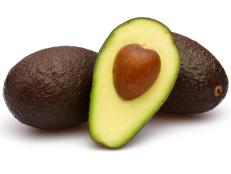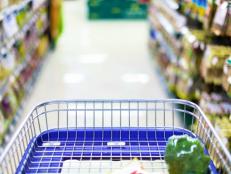Food for Good: Roberto Santibañez’s Non-GMO Corn Policy


The Grocery Manufacturers Association reports that 70 to 80 percent of foods purchased by Americans contain genetically modified ingredients (GMOs). Celebrity chefs are not fans of this statistic and headed to Capitol Hill last December to encourage mandatory labeling on any food with GMOs. In their arsenal was a petition signed by more than 700 chefs urging lawmakers to act on consumers' behalf so they know exactly what it is they are buying.
Genetically modified food has been around for 20 years. What is the definition of GMO? Any food that has been re-engineered with genes that are not naturally part of its DNA. It has been argued by some that the modification is beneficial to consumers, as the ingredients that have been altered by this technology require fewer pesticides and keep down production costs. Others believe that, despite advances in science, foods should not be messed with. The extent of this technology includes injecting some, but not all, strawberries with fish genes to prevent them from freezing, giving cows hormones to increase their milk production, and redesigning soybeans and corn to be herbicide and pesticide resistant.
The U.S. Department of Agriculture reported in 2014 that 93 percent of corn grown in the United States was genetically modified. Much of the corn in the U.S. is used as cattle feed, and you can find it in everything from cocktail mixers to breakfast cereal. Thus, chefs who believe in natural, farm-to-table cuisine aren’t just concerned about what’s sold to consumers on supermarket shelves; they are taking a look inside their own pantries, screening purveyors' and farmers' products, and making sure that what’s on their menus is also verified GMO-free. Chef José Andrés sells a Spanish-grown, non-GMO purple garlic on his website, and Chef Tom Colicchio led the charge and is the co-founder of Food Policy Action.
Mexican chef and cookbook author Roberto Santibañez has taken matters into his own hands when it comes to his restaurant’s corn. He launched an Heirloom Corn Initiative at all three branches of his New York restaurant, Fonda. Imported from Mexico via Masienda, Santibañez’s non-GMO heirloom landrace corn is “locally adapted, open-pollinated and cultivated by selective breeding.” The corn comes in 59 varieties and an array of colors. In any given week, his kitchen will receive ears ranging from deep red to violet blue to golden yellow, each indicative of the region in Mexico where the crops grew. “If the corn changes color every week, I don’t care,” says Santibañez. “Diversity is always a good thing. That’s my philosophy.” Sometimes that means his tortillas come out “brownish,” he says. “It’s all good; if it tastes delicious and is organic, why not?” says Santibañez. “It’s much better for you.”
A native of Mexico City, Santibañez remembers corn of his childhood as meaty and hard, not sweet like today. “Corn was not supposed to be a grain that became sugar,” says Santibañez. “There are beets and cane that are naturally rich in sugar. You could never produce sugar from the corn in Mexico.” He believes that one of the reasons for the high in obesity rates in Mexico has to do with the genetically modified corn. “You’re supposed to get fiber from corn,” says Santibañez. “The kernels had proteins and wonderful things that Mexican people ate in ancient times.”
Until recently, Santibañez was hard-pressed to find quality, non-GMO heirloom corn from his home country. “You could get it from someone in California, but the shipping was expensive and distribution wasn’t easy,” says Santibañez. Even in Mexico it is hard to find, as the country now imports its corn from China and the U.S. “It was exciting when [Masienda] came to us and said they had the heirloom corn. I thought, 'Whatever it is, we’ll buy it.'” Most of his supply from Masienda is crushed into masa and prepared into thousands of tortillas, imperfect in color and yet perfectly delicious. “We have forced the world for wanting perfection and that’s bad,” says Santibañez. “We have to change that — we all have to jump in and change that.”
Kiri Tannenbaum is a graduate of Le Cordon Bleu Paris and holds an M.A. in food studies from New York University where she is currently an adjunct professor. When her schedule allows, she leads culinary walking tours in New York City and is currently at work on her first book.

































